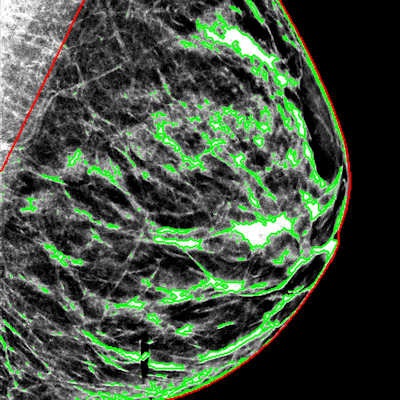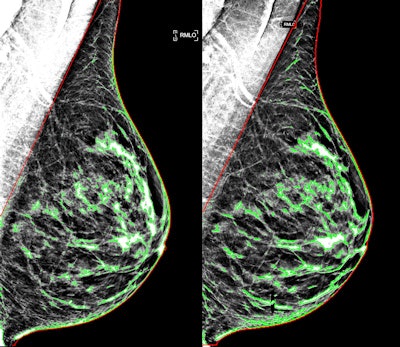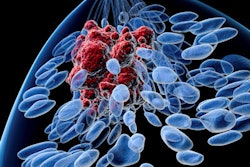
How well do synthesized digital breast tomosynthesis (DBT) images work for estimating tissue density compared with estimates derived from conventional 2D digital mammography images? Turns out synthesized 2D works just fine, according to a new study published online January 25 in Radiology.
If digital breast tomosynthesis (DBT) is on its way to becoming the new standard of care for breast cancer screening, it needs to perform well across a variety of metrics -- including breast density assessment, according to a study published online January 25 in Radiology.
But the fact that more breast imagers are using synthesized 2D images with DBT to reduce radiation begs the following question: How well do the synthesized images estimate density, compared with their digital counterparts? Turns out they do just fine, wrote a team led by Dr. Emily Conant from the University of Pennsylvania in Philadelphia. The group evaluated the agreement between automated estimates of breast density from standard and synthesized mammograms (Radiology, January 25, 2017).
"Fully automated estimates of breast density made from synthetic mammograms are ... comparable to those made from standard-dose mammograms," the group wrote. "This may be important, as standard two-dimensional mammographic images are increasingly being replaced by synthetic mammograms in DBT screening."
Quantitative assessment
More often than not, radiologists visually evaluate breast density based on digital mammography images and then assign the image a BI-RADS density score. But visual assessments are subjective and prone to variability, Conant and colleagues wrote. To address this problem, automated software has been developed to generate reproducible, quantitative breast density measures.
 Dr. Emily Conant from the University of Pennsylvania.
Dr. Emily Conant from the University of Pennsylvania.With this in mind, the researchers view this study as part of a larger effort to move toward automated density assessment techniques.
"We truly believe that the future of measuring breast density is in automated techniques that reduce variability," Conant told AuntMinnie.com. "We're building the case that quantitative assessment is the way to go."
For the study, the researchers included 3,668 negative DBT screening exams that had been performed over a four-month period; both standard-dose and synthesized mammograms were available for each exam. They then assessed agreement between density estimates derived from each type of mammogram using automated software developed at the university.
Automated measures of breast density from synthesized mammographic images compared well with those from standard mammograms, with a correlation coefficient of r = 0.92 (p < 0.001), the group found.
The result is good news in an era of rapid implementation of synthesized 2D mammography with DBT and also intense focus on breast density assessment, prompted by notification legislation passed in more than half of U.S. states, according to Conant and colleagues.
 Examples of a screening digital mammogram (left) and synthetic mammogram (right) with 10% and 11% percent density, respectively, demonstrating substantial agreement in quantitative density estimation. Images courtesy of Despina Kontos, PhD.
Examples of a screening digital mammogram (left) and synthetic mammogram (right) with 10% and 11% percent density, respectively, demonstrating substantial agreement in quantitative density estimation. Images courtesy of Despina Kontos, PhD."The ability to reproducibly assess breast density independently of mammographic image type is important, as inconsistent breast density assessment could have implications for cancer risk assessment and also for whether it may be appropriate to pursue supplemental screening," they wrote.
Mind the gap
The ability to acquire consistent breast density estimates from both synthesized and standard-dose 2D digital mammography images should allow either image type to be used interchangeably -- which is beneficial in settings where not all women may undergo standard-dose mammography, the group wrote.
In addition, the study findings address a gap in the clinical literature, corresponding author Despina Kontos, PhD, told AuntMinnie.com.
"Almost everything we know right now about breast density and its association with cancer risk and cancer masking is based on studies that have used 2D mammograms," Kontos said. "So it's important to show that synthesized 2D mammograms are just as effective when assessing density."



















